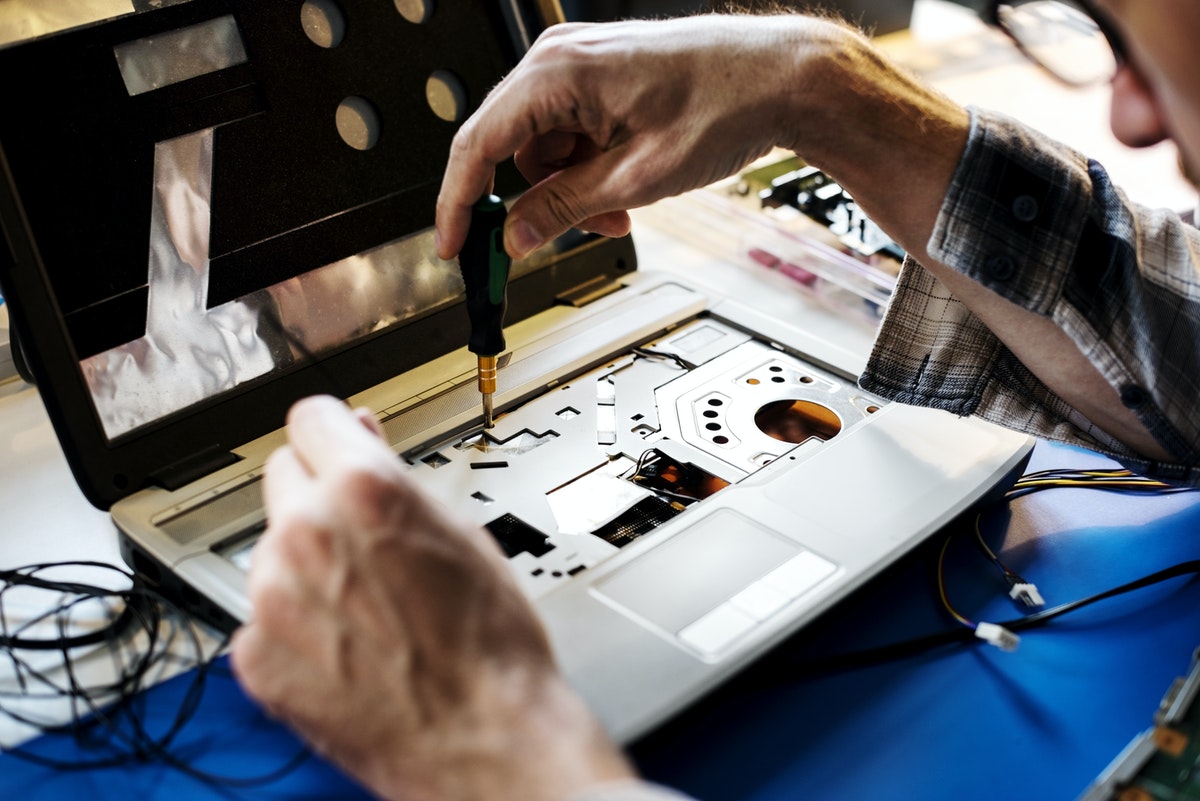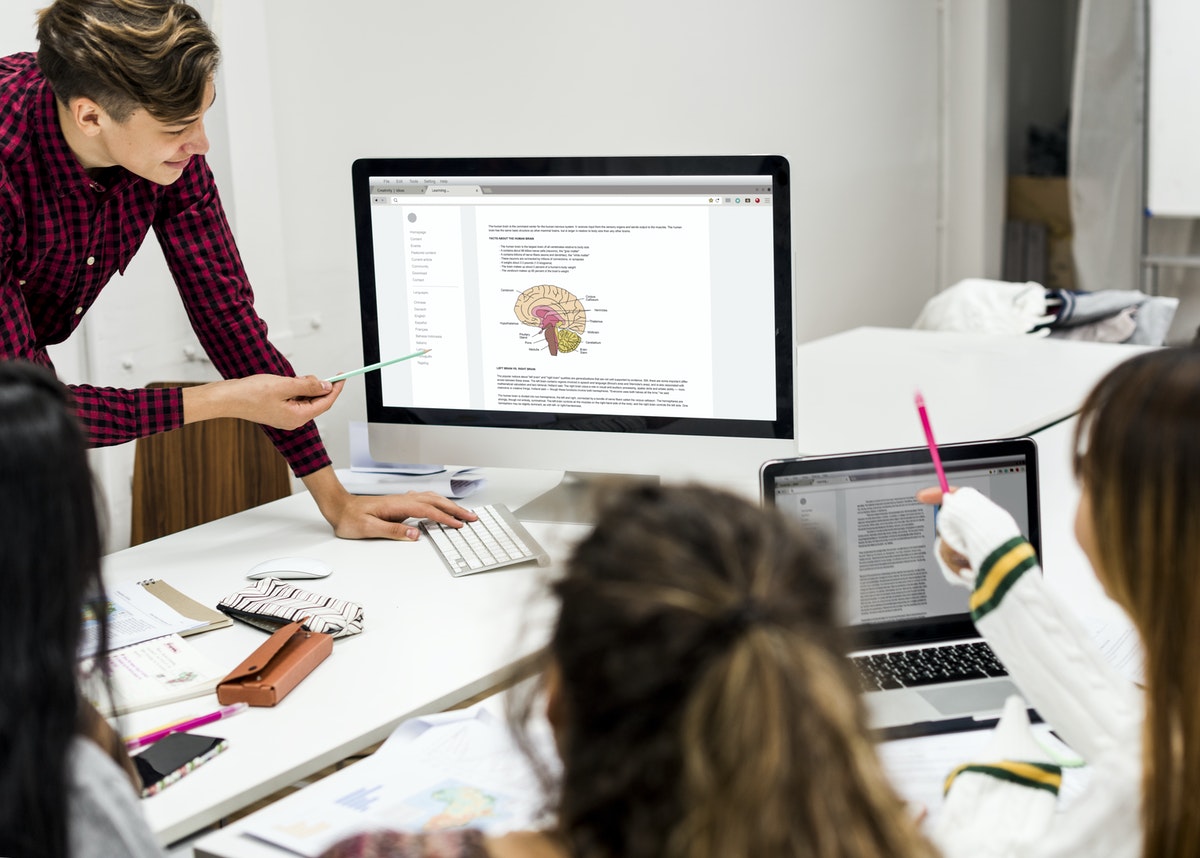The pandemic was a wake-up call for many schools that simply weren’t prepared to transition to online learning. As a result, several educators were forced to quickly roll out one-to-one programs, providing students with laptops or other electronic devices for digital learning. Unfortunately, without a school technology plan in place, these precious resources weren’t always given the care and support needed to maximize their functionality.
After a year of figuring out how technology contributes to a more inclusive classroom, perfect your setup this time around. We’ll review the best practices for developing a school technology plan, covering device tracking, tech support and repair, training for students and staff, and getting the best internet connection for a school full of new technology.
Keep tabs on every device
You wouldn’t buy a car or house without installing the proper locks and security features. The same goes for your school’s technology. Keep tabs on all your school’s devices by installing tracking software. Then, if a device is ever lost or stolen, the school’s IT department can easily locate the device. Equally important: they can lock it down to prevent potential tampering.
Ensure there’s a protocol in place to follow if a device ever becomes lost, stolen, or damaged. Decide whether students and parents will assume financial responsibility should anything happen to their laptops. Then, create an agreement for students and parents to sign that outlines the appropriate use and care of the loaned device and any stipulations for breaking the agreement. If the devices are staying at the school, consider assigning the same laptop to students to use throughout the semester. This will help the IT team better track damage and keep students accountable.
Get the tech support your school needs
Don’t count on every laptop to maintain its flawless appearance and smooth functionality. You need a dedicated IT team to support your school with any tech issues or repairs that arise. Make sure that you have enough IT staff available to assist with device setup, tech support questions from students and teachers, and any necessary repairs and future updates.
Along with securing funding to employ IT professionals, make sure there’s a fund for purchasing new laptops or necessary repair parts. Establish a separate room or facility in your school to store, charge, and repair devices. You may want to also invest in IT help desk ticketing software. This can help streamline the process of requesting tech support and track the status of each device.
Schools may even wish to seek tech-savvy students and assign them as a tech support aid for each class. This position can replace the typical teacher’s assistant (TA) role often filled by upperclassmen. Or, teachers can simply elect one student in their class to help with tech questions. The IT department or school administrators can also make simple charts for each class to help with common tech troubleshooting.

Provide tech training to staff and students
Often, teachers will be students’ first resource for tech knowledge before they have to approach IT staff. Prepare teachers by providing thorough hands-on training in the form of required training sessions. These sessions should ensure that teachers and staff are comfortable with the major aspects of your school technology plan. They’ll also need a thorough understanding of the devices and technology available to them and students. For example, train teachers on how to do the following:
- submit an IT ticket.
- guide students to helpful websites and class logins.
- provide instructions on how to complete a computer assignment before students open up their laptops.
Similarly, make sure that students and their parents know how to properly use and care for school-issued devices. A basic knowledge of cleaning, storing, and operating a laptop or tablet can prevent a lot of damage. Plus, some families may not have advanced knowledge of how to use these devices for educational purposes. As part of your school technology plan, consider requiring students and parents to attend a computer literacy course before the start of the school year or during the first couple weeks of school.
Give your school the best internet connection
Your school may have a decent internet connection now. But will it hold up when hundreds, or thousands, of devices are all trying to connect? To prepare for an influx of devices connecting to the same network, many schools are installing Wi-Fi 6. Wi-Fi 6 boasts speeds of up to 9.6 Gbps (whereas Wi-Fi 5 is around 3.5 Gbps). But where it really packs a punch is its ability to connect multiple devices to the internet without skimping on streaming speed.
When selecting devices for your school, look for laptops and tablets that are powerful enough to handle the software and various programs needed. The technology won’t be very helpful if it’s difficult to use. Also, plan on buying extra laptops for those whose laptops are being repaired or are missing. Similarly, have extra chargers available to loan to students who come to class without a fully charged device.
{{< blog/cta-1 “Vibe Interactive Whiteboard for Education” “https://vibe.us/lp/scenario-education” >}}
The best educational tech for the classroom
Classroom technology looks a little different now that education is making the switch to remote or hybrid learning environments. Choosing the right apps, tools, and technology is absolutely critical to ensure a smooth transition between in-person and remote settings. Consider equipping your school with the following hybrid learning tech.
Laptops
There are many considerations that come into play before purchasing any electronic device. If you’re buying in bulk, though, extra thought and care are required. Before you choose a standard laptop for your school, think about the specific needs of the students and staff. Look for features like superior battery life, durable construction, and a lightweight and portable design. You may even want to explore convertible 2-in-1 laptops that can double as tablets for versatility with note-taking, artistic projects, or presentations. If you’re not in a time crunch, save some money by learning the best time to buy a laptop.
Laptop storage cabinets and carts
Schools may require students to return their laptops at the end of the school day, or they may be permitted to take them home with them. Regardless of your school’s policy on the matter, those laptops need a place to stay if they’re being repaired, set up with updates, or when school isn’t in session. Look for a laptop storage solution that has a secure lock system and organized cable management.
In addition, there are several laptop storage cabinets that feature simple charging ports and automatic power shut off after a laptop is charged to prevent damage to the battery. For easier transportation, or if cabinet space is limited at your school, go with a laptop storage cart. This handy storage option is a favorite of IT teams needing to deliver laptops across the school campus.
Auto tracking cameras
A standard computer camera can’t always capture the full learning experience that teachers want to provide remote learners. Make a lecture feel more interactive and personal by using an auto-tracking camera. These cameras include technology that easily detects and tracks presenters, allowing teachers to freely move around the classroom and interact with in-person students. Whether you’re presenting to a room full of students or a full video conferencing session, help your students feel like they’re right in front of you.

Digital storage space
Every student and staff member is going to produce their fair share of data — whether that be in the form of digital documents, photos, videos, or other files. These files could quickly clog up devices and slow their speed and functionality. Also, these files would need to be removed from the device every time it goes to a new student or staff member.
Consider connecting your school with a cloud storage system. Cloud storage allows everyone to safely store their files in their own secure cloud. Programs like Google Classroom have become a good option for educators looking to incorporate file sharing and storage with classroom collaboration.
Interactive digital whiteboard
Whether you’re in the same room or connected to the same virtual meeting, collaborate, create, and engage with a digital whiteboard. Vibe’s all-in-one classroom smart board lets you enjoy the versatility of real-time digital whiteboarding while using your favorite video conferencing app (and over a hundred other apps). Students can tune in and engage through Vibe’s user-friendly canvas on their own devices.
As the most cost-effective interactive whiteboard on the market, Vibe is a smart addition to any hybrid classroom. Schedule a free demo today to see how teachers and students can mutually benefit from Vibe.
Vibe offers a collaborative solution combining an interactive digital whiteboard and innovative smart software. Increase engagement and efficiency at your brainstorming sessions, virtual training, and classroom sessions by integrating your favorite applications with video conferencing and an infinite, mess-free writing canvas. Collaborate today with Vibe.
Looking for the latest in interactive whiteboard technology? Check out Vibe today!
